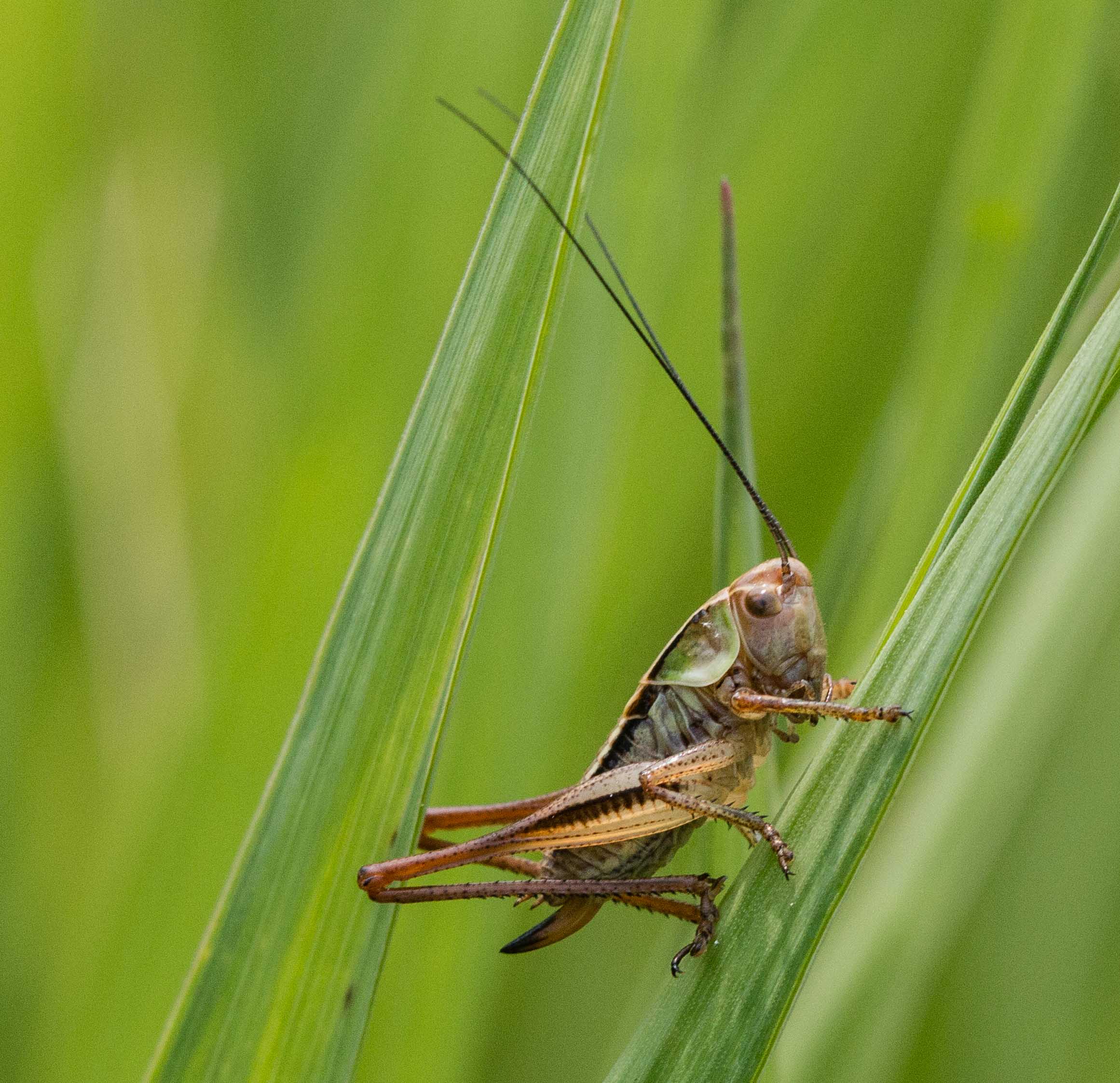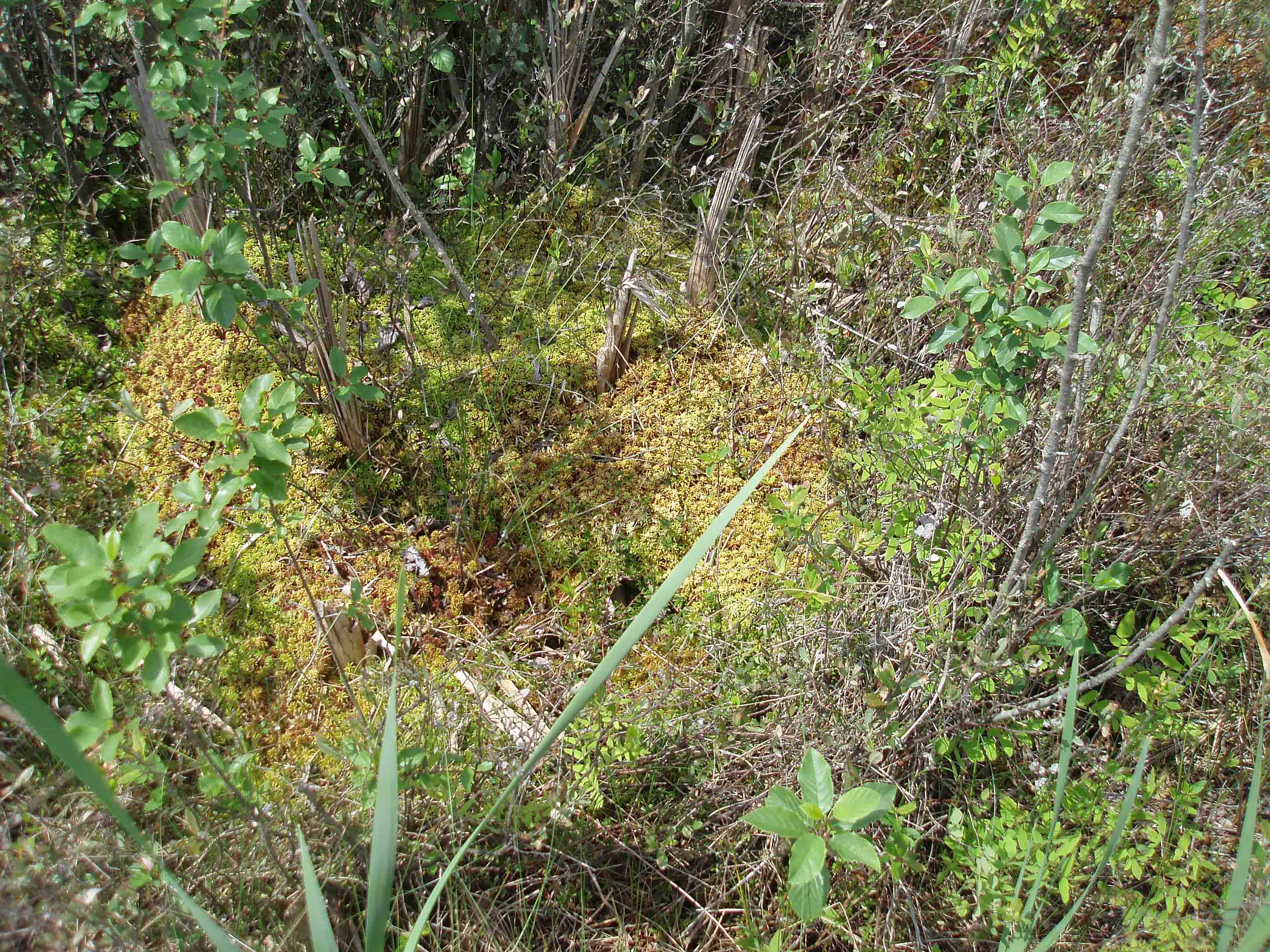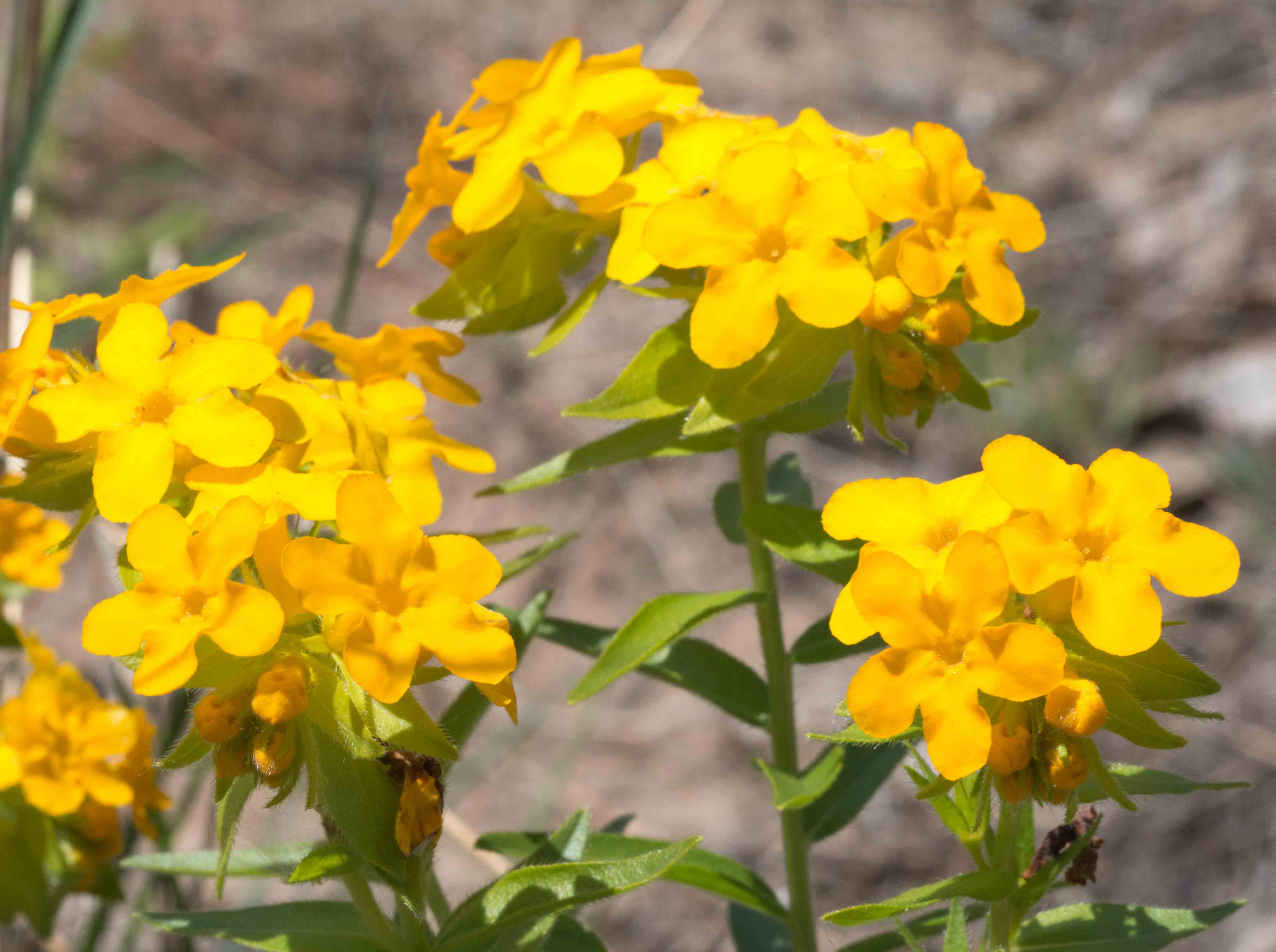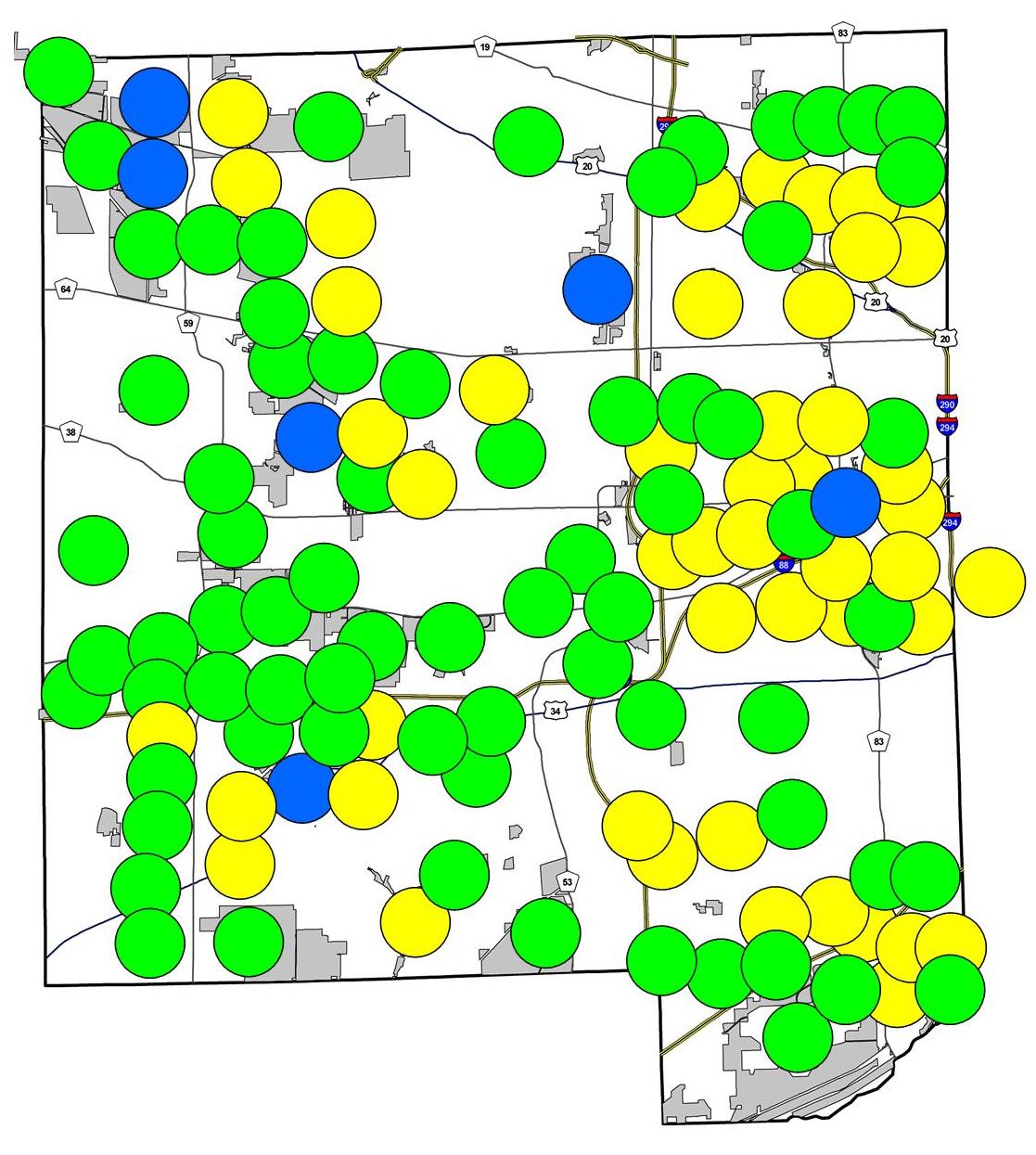by Carl Strang
For many years, the Indiana Academy of Science has organized an annual bioblitz. This is a gathering of scientists, both professional and amateur, who spend a weekend compiling a list of all the species in their respective areas of expertise that they can find in a designated location. I first participated in the 2012 Kankakee Sands event, and it has been a highlight of each field season since. Last year’s bioblitz had to be postponed thanks to the pandemic, but we were able to resume the series this June in the Mosquito Creek area of Harrison County, bounded by a bend of the Ohio River.
Most of the bioblitzes have been early in the season, before most singing insects have matured, but the southern ones especially have provided experiences which have made them worthwhile for my research. One example is my first encountering the spring trig (Anaxipha vernalis) at the Connor Prairie bioblitz in 2013. The species then had not been formally described, and simply was listed in the Singing Insects of North America website (SINA) as “Anaxipha species G.” I later found a few in the southern edge of my study region, but most of my experiences with them have been through the bioblitzes.
This year they proved to be by far the most abundant singing insect at Mosquito Creek, and I was able to resolve a question that had bothered me. Spring trigs generally remain buried in dense grasses close to the ground, and are difficult to see. I had collected a male at Connor Prairie, and he had a head that was all dark brown. In a later bioblitz at Eagle Creek Park I had photographed a female, and her head was pale with a scrollwork pattern of dark lines:

This year I wanted to confirm this sexual difference, and was able to get a male and a female in the same jar. The head color difference was as I had noted before, the male’s uniformly dark:

Furthermore, the male’s abdomen was black or very dark brown, the female’s a much paler tan.
My first couple of hours of bioblitz work were spent in a grassy parking area at one of the Mosquito Creek sites.

I was struck by rapid sharp chirping around the grassy edge near the forest, the chirps contrasting with the spring trig continuo:
The chirps had the quality of field crickets, but were so compressed that the pulses could not be distinguished by ear. That combination of location and chirp quality pointed to southern wood cricket (Gryllus fultoni), a species I never had met. I flushed one out, and the combination of yellow cerci and brown wings on a generally black field cricket confirmed the identification:

Though southern wood crickets prefer to be in the forest, they have been shown to shift to the forest edge when their close relative, the northern wood cricket (G. vernalis), is present. This proved to be the case in the evening, when northern wood crickets started singing within the forest with their lower volume, less compressed chirps. This apparently is now only the second county where the southern wood cricket has been documented in Indiana.
A third species in that parking lot was the eastern striped cricket, Miogryllus saussurei (Tom Walker has recently added an interesting historical account of this species’ naming to SINA, and the next edition of my guide will replace the verticalis species name accordingly). I made a recording there of the distinctive buzzing chirps:
I needed to photograph a male, and succeeded in flushing one out:

I had hoped to find some exotic (to my experience) early season grasshoppers, but the only ones I found are common in the northern part of the state as well, the green-striped grasshopper (Chortophaga viridifasciata) and the sulfur-winged grasshopper (Arphia sulphurea). The latter were very dark brown with tan wing edges, and their hind wings were bright orange-yellow:


I found three more species. Two of these, a spring field cricket (Gryllus veletis) and a group of protean shieldbacks (Atlanticus testaceus) are common and familiar in the North, but a loud sharp trilling on the grounds of The Nature Conservancy’s headquarters grabbed my attention:
It was louder, had a more rapid pulse rate and slightly different pitch from the nearby spring trigs. I immediately thought of the southeastern field cricket (Gryllus rubens), which I had heard on visits to my brother’s residence in North Carolina. I had listed it as a possibility because the species had been documented once before in Indiana, a few counties west of Mosquito Creek. I was able to flush out the singer, and confirmed that it was a field cricket:

The southeastern field cricket is unusual for its genus in having long trilling songs rather than discrete chirps.
So there it is. The plant people list hundreds of species in these bioblitzes, birders find dozens, and I perennially have one of the lowest species counts. The experience always proves worthwhile, both for the experiences like the ones described here and enjoying the company of other field biologists.




























